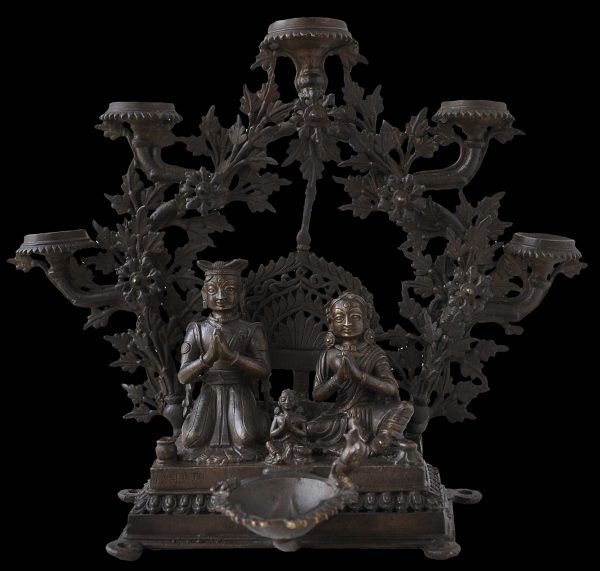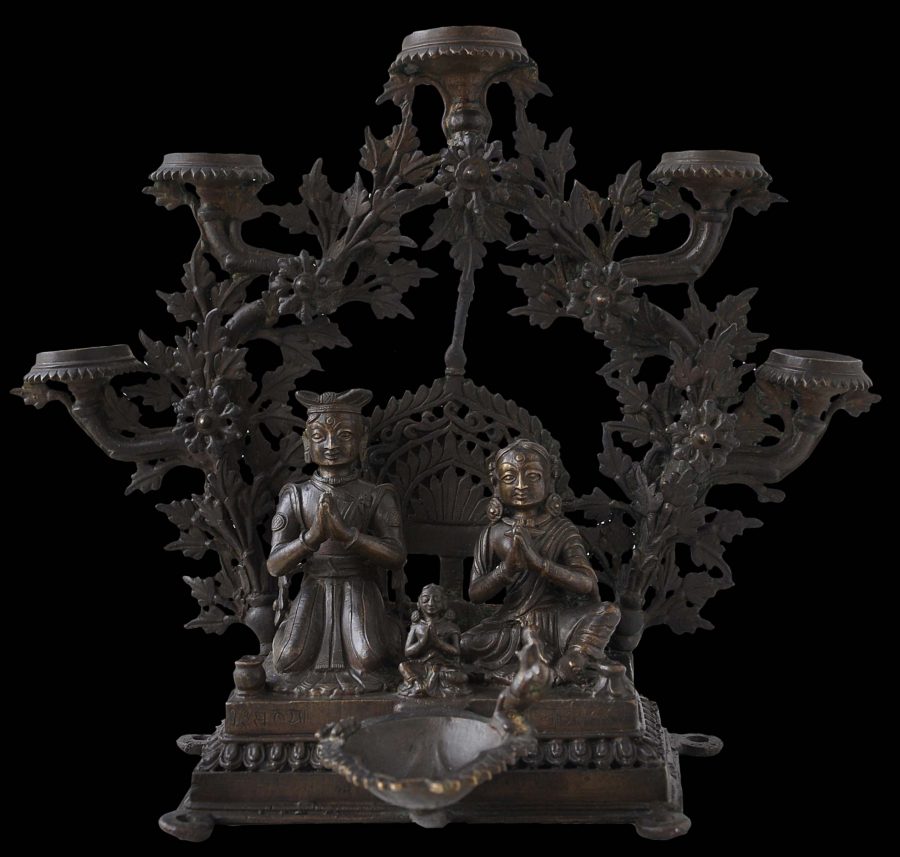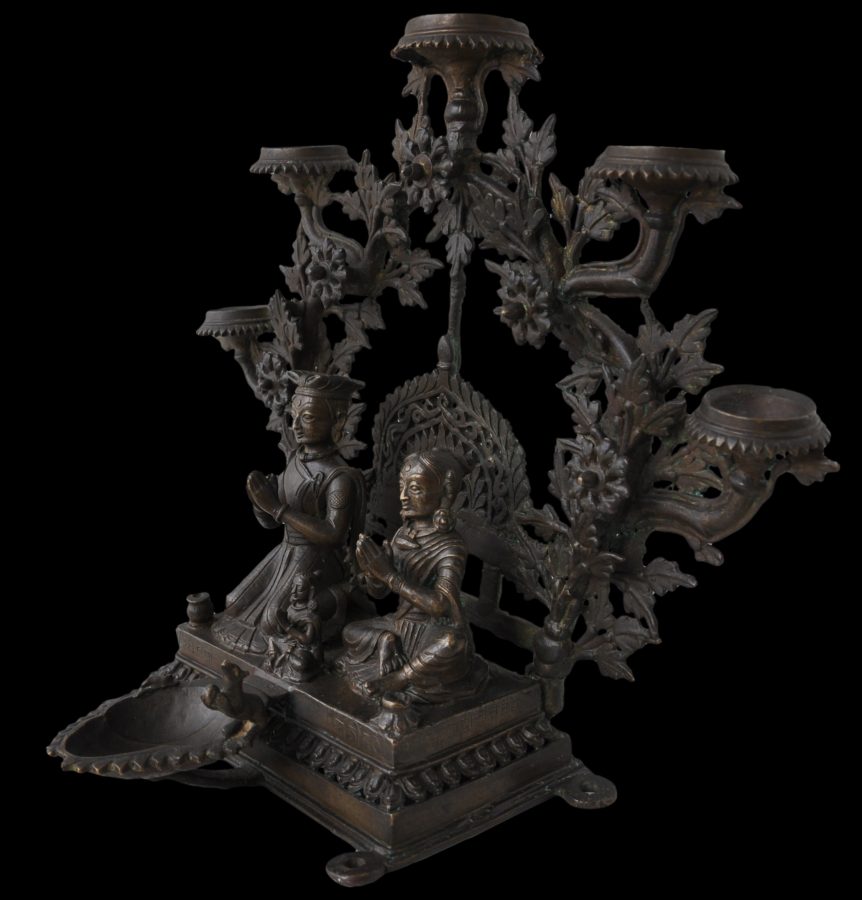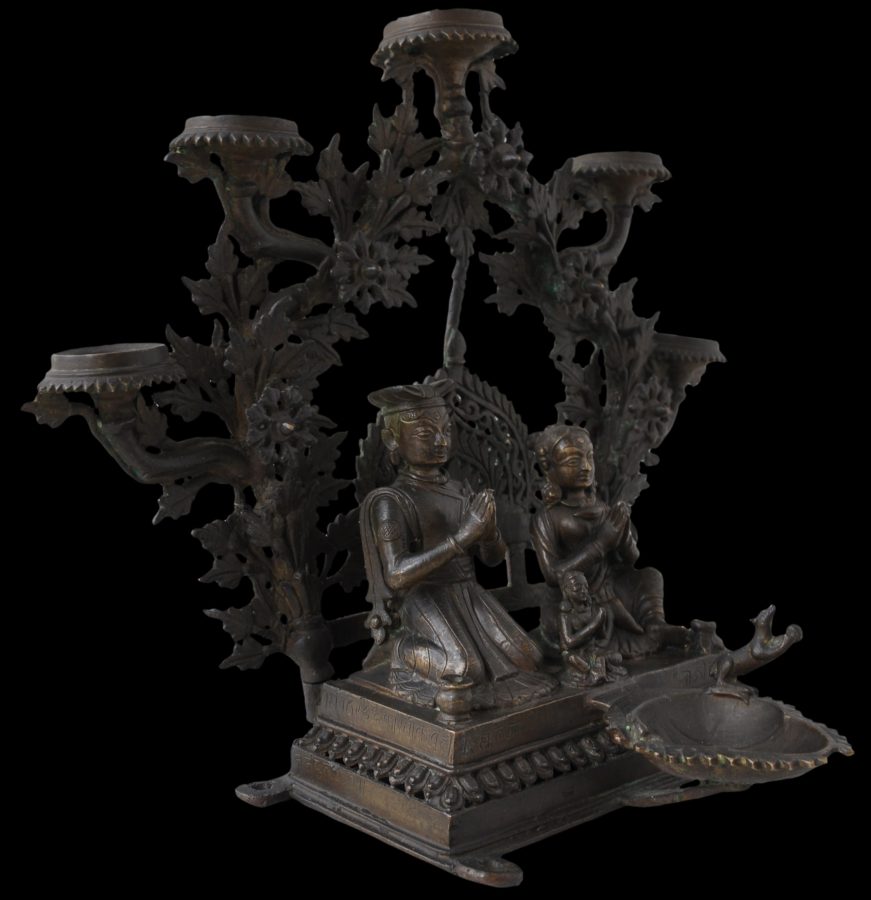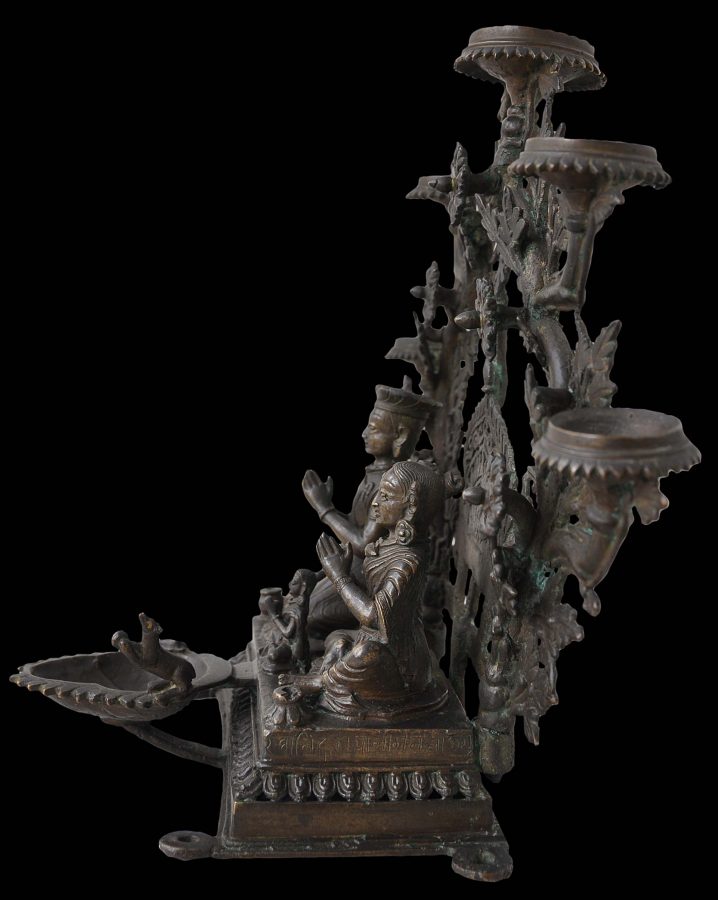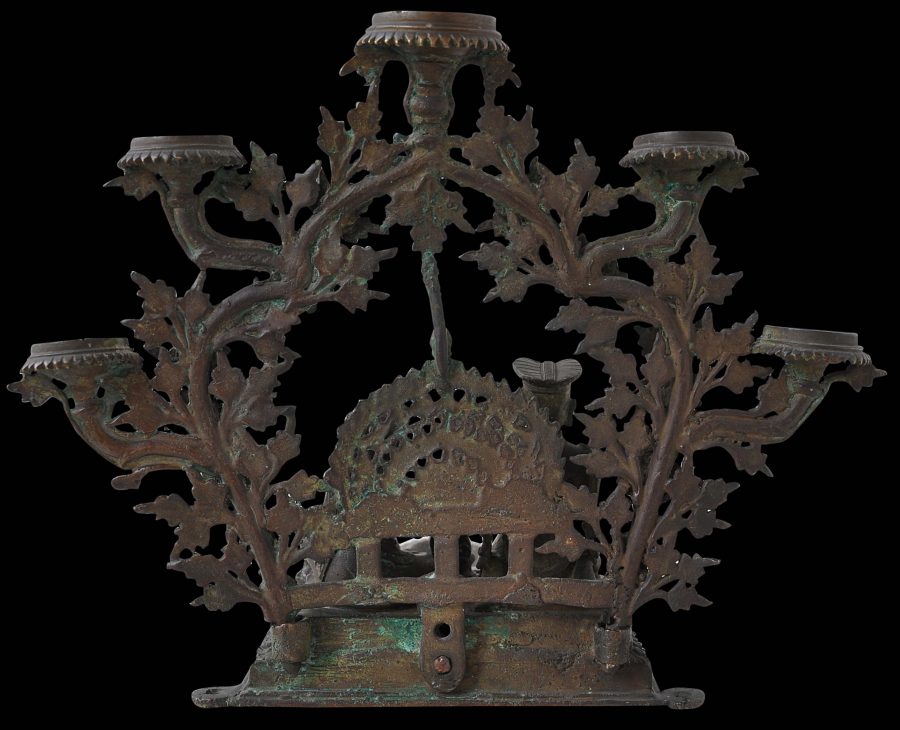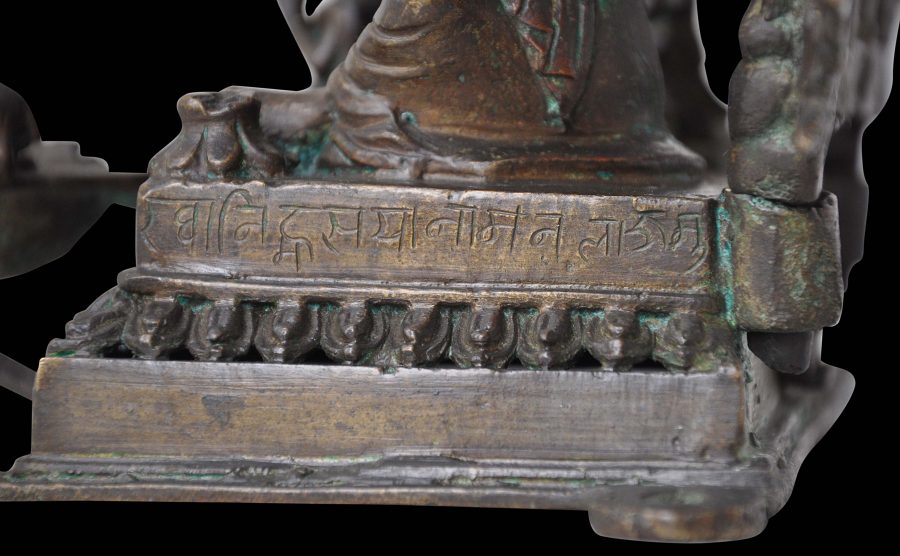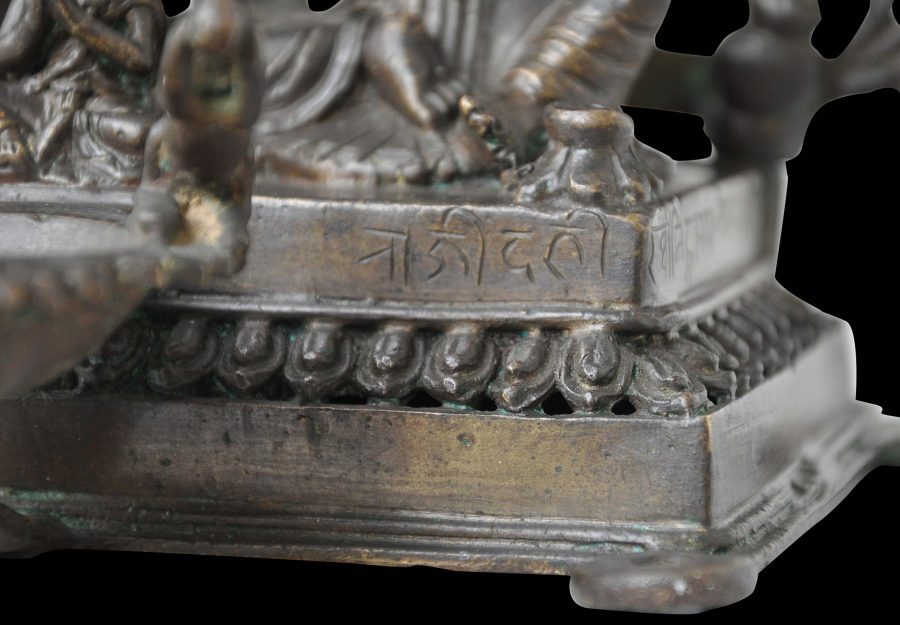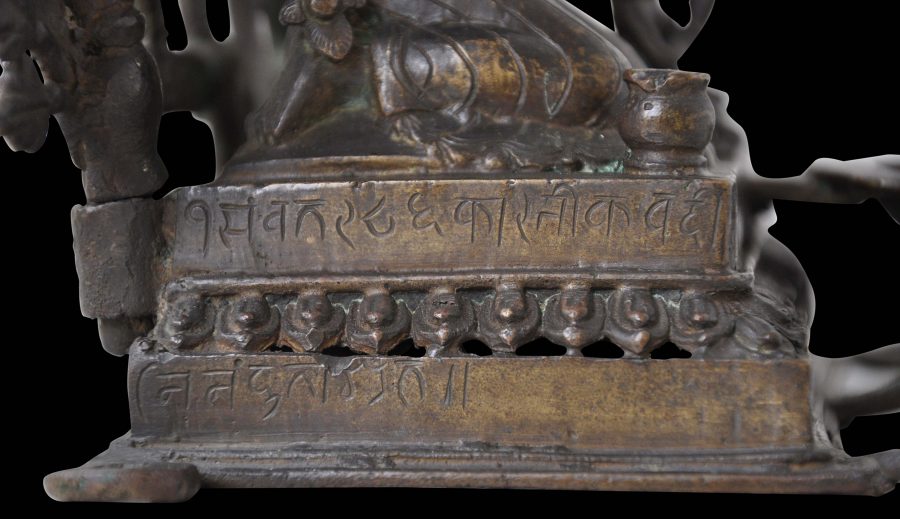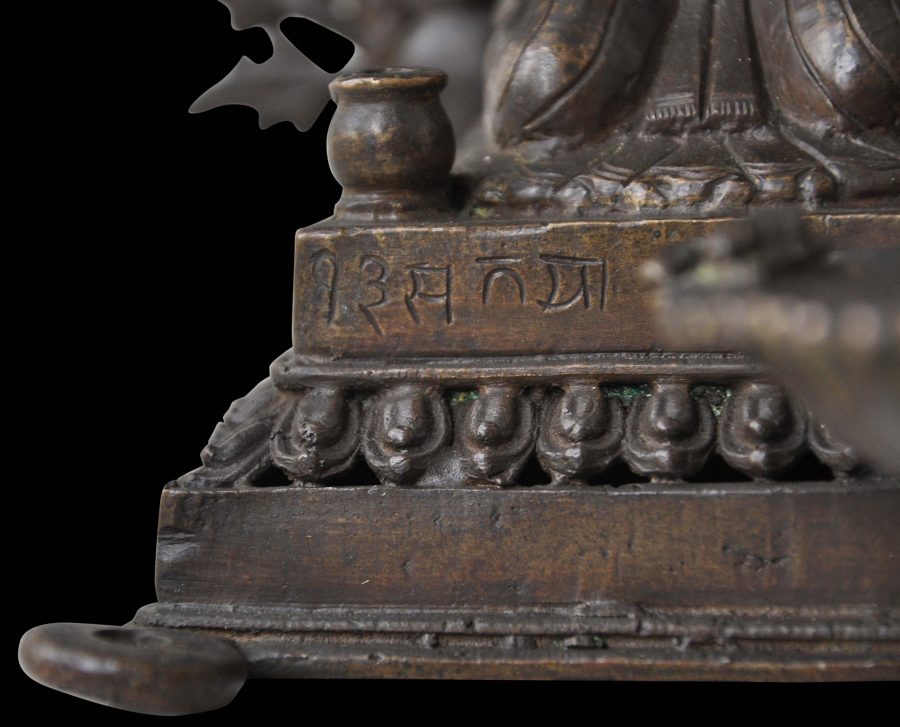This very finely cast temple oil lamp was commissioned and donated to a temple in the Kathmandu Valley almost certainly by an aristocratic donor. The casting work is typical of finer work that was done in Patan undertaken by Newari craftsmen.
The image has an inscription engraved in Devanagari and Prachalit Nepal Lipi script across the front and two sides of the platform. The inscription indicates that the statue was commissioned and donated by a man named Rajid of the Bhawkhwa sub-caste and his wife on the thirteenth day of the Newari month of Karttik in 986 Somvat (this equates to 1830.)
The centrepiece of the lamp is a platform on which is a pair of male and female worshippers and another smaller worshipper which might represent the couple’s child. The maile kneels and the female is seated, in common with Newar styling. All three have their hands in anjali mudra (the gesture of reverence). Their fine jewellery and richly detailed garments suggest the royal origins of the main pair. The female figure wears a short-sleeved blouse, a skirt with a central pleated panel that appears to be suspended from a belt, prominent earrings and Newari tayo necklace. The male figures wears an impressive tunic, a Malla-style headdress and a thick necklace. A leaf-shaped oil pan with serrated edging is before the trio. A small squirrel has been cast to one side. Another would have been cast to the other but this now is missing. The platform is tiered with a row of open-work lotus petals worked along it. It sits on four lugs which would have allowed the lamp to be secured to a surface.
The backplate comprises multiple foliage branches that support five separate shallow dishes that accommodate oil and a wick.
The platform and donor figures have been cast as one piece, and the backplate has been cast as another single piece. The two elements are held together permanently by means of riveting that is contemporary with the casting.
The figures in this lamp are similar to a pair at the Kwa Bahal (known as the ‘Golden Temple’ because of its richly gilded, embossed copper facade) in Patan, a Newar Buddhist temple and the most important temple in the city. The temple entwines the various religions of the region: Newar Buddhism and the various Tibetan Buddhist schools mixed with Nepalese Hindu elements. According to inscriptions in the temple, the Kwa Bahal devotee images were dedicated in 1804 (Samvat 934).
A related image, in gilt copper, of a female donor is in London’s Victoria & Albert Museum (IM 371-1914) and is illustrated in Heller (2009). This example is attributed to the Shah period, late 18th/early 19th century. Another example, dated 182, is in the Denver Art Museum (see Lanius & Otsuka, 2007, for an illustration.)
Overall, this is an excellent piece, stable, robust and very finely cast. It has a wonderfully rich chocolate patina.

Husband-and-wife devotee figures in the Kwa Bahal (Golden Temple) complex, Patan. (Photographed, August, 2011.)

An early image of Newar girls taking part in a ceremony.
The girl third from the left wears a tayo necklace, similar to that won by the female devotee portrayed in the lamp.

References
Gabriel, H., Jewelry of Nepal, Thames & Hudson, 1999.
Heller, A., ‘Tibetan Buddhist Sculptures in the Robert H.N. Ho Family Foundation Gallery’, in Orientations, May 2009.
Lanius, M.C. & R.Y. Otsuka, ‘History of the Asian art collection at the Denver Art Museum’, in Arts of Asia, January-February 2007.
Macdonald, A.W. & A. Vergati Stahl, Newar Art, Aris & Phillips Ltd, 1979.
Pal, P., Art of Nepal, Los Angeles County Museum of Art, 1985.


